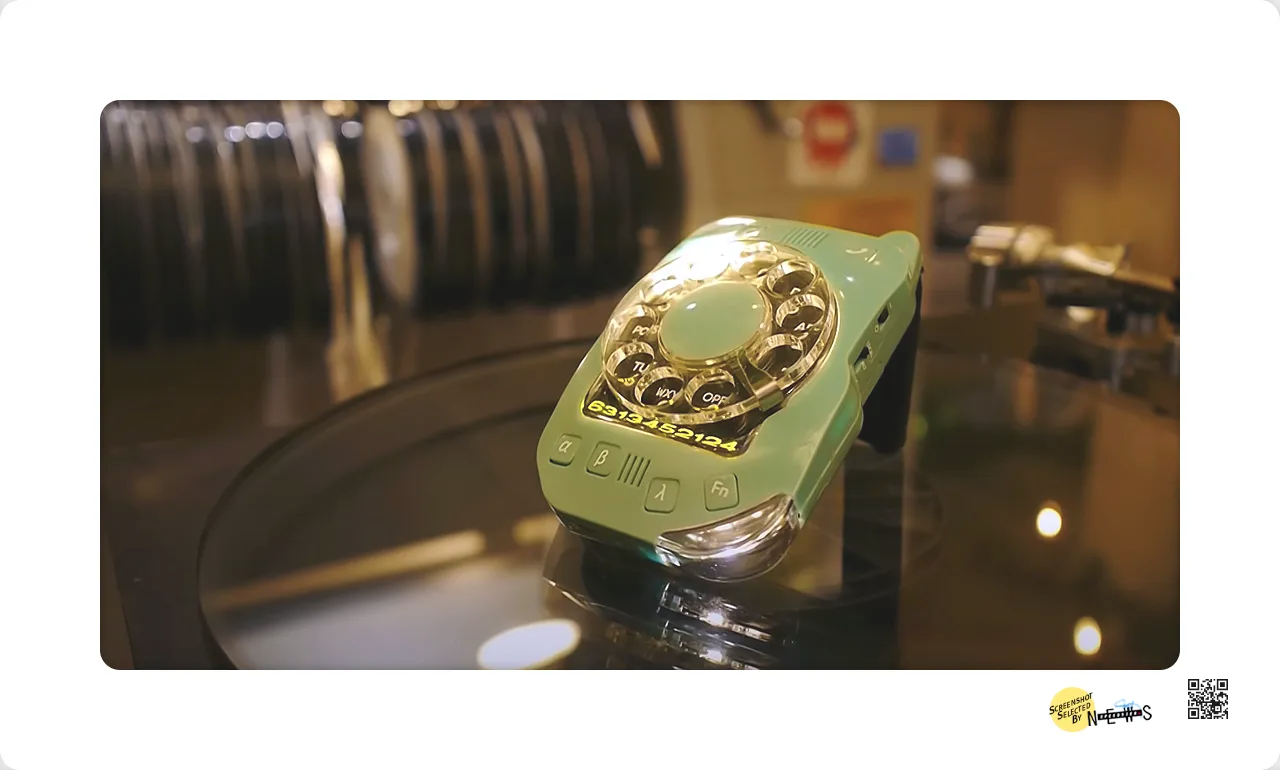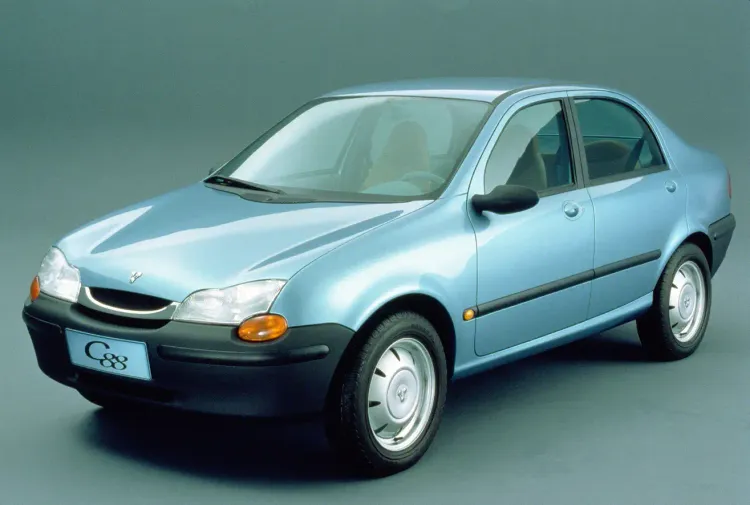Rage Against the Connected Machine

This is an outsider’s view of developments in the connected car. Fair warning, but automakers and experts speaking in abstract about the future of driving just makes me sad.
It’s time for each of us to stand up and fight Software Defined Vehicles (SDVs) before our cars, roads, and transportation systems are irrevocably ruined. In the name of recurring profits, a misguided belief in what customers want, and major technological blind spots, the drive to mass adoption is already underway.
Here are seven ways to help delay these developments and change the trajectory of automotive technology:
🏁 opt out of any connected services your car already has
Service providers like OnStar, Volkswagen Car-Net, NissanConnect, Mercedes me, BMW ConnectedDrive, Bluelink, Audi connect, Connected Services by Toyota, Sensus, STARLINK, and others are the enablers and precursors to SDVs.
🏁 refuse to purchase a SDV or a “connected car”
Waning customer interest in connected cars will force companies to re-evaluate plans and possibly go back to just making ‘dumb’cars… (lol as if)
🏁 support human-powered vehicles (bicycles) & infrastructure
Two-wheeled transportation has never been better, thanks to electric assists becoming common for every type of bicycle and human-powered vehicles. Fewer people in cars leads to several proven benefits, including fewer car crashes.
🏁 support micro-mobility vehicles & regulations
Smaller vehicles that aren't quite bicycles or cars often face regulatory hurdles that prevent their more widespread adoption. These vehicles are essential to reducing emissions around the world, and can reduce road congestion as well as delivery costs and fuel surcharges.
🏁 support legislation to better regulate SDVs
Head to the appendix for more on this specifically…
🏁 advocate for trucking, delivery & professional drivers
Crucial to every world economy, these workers often struggle with earning a living wage, healthcare, working conditions, and so on. SDVs have the potential to replace these jobs with automated ones.
🏁 figure out how to keep your own ‘dumb’car roadworthy
That oil change you’ve been putting off, or the costly A/C system repair? Might be cheaper in the long run than having your data sold without your knowledge and later dealing with ransomware or identity theft: :\
Motor Trend recently posted a wide-ranging video called The Future of Driving? under its Coding the Car series of QNX/Blackberry-sponsored content. I’m not decrying the guests, their expertise, or anything they’re saying—it’s clear each has treated the topic with immense consideration, both alone and with their teams and employers.
This. Is. Happening. 🚩
That’s my first red flag, actually: how self-assured and confident this “customer-focused” charade seems. Statements similar to, “It’s gonna be…” are used to a farcical amount in the entire 22 minute mini-documentary, which ends up feeling more like a corporate recruitment video for a future that’s already here than an honest attempt at selling the concept of a Software-Defined Vehicle.
I would comment on a few of the red flags in the documentary, but there are so many I’d have to dissect this horror show line by line. We’re better than that, and this SDV topic is much more than a sponsored video…
The working title of this piece was, “But how are you making the car better?” because that’s the question missing from our transition from analog cars to connected vehicles.
Why? In my qualified opinion, in a race to quantify and monetize a customer experience, automakers never managed to master the car itself.

The genie is out of the bottle and already controlling the family SUV from the couch—it would be ignorant of me to state otherwise.
This transformation is well underway. That’s why we must resist it now, even though momentum is very much in their favour.
First, in recent years, for many reasons, our vehicles became too expensive to afford outright. No effort was made to change this, only to extend financing terms and payment options. Then, companies added onboard computers and network connections. Followed by cameras, sensors, and advanced “self-driving” software.
Current new car prices, I need not remind you, have never been higher…anywhere.
Now, vast corporations are dotting their i’s and crossing t’s, hiring developers and writing code in anticipation of deploying the infrastructure that will tie it all together—and charge you for it.
The final stage is to become passengers in cars that we never really own, and could never afford to own, anyway. We pay them so we can tell ourselves (and neighbors) about the new car we bought although it’s more like a rental. How’d the Blockbuster video model work out, again?
I hope for a more holistic approach to future automotive technology, SDVs and connected cars, and it’s with two examples—the first about how mobile phone technology can evolve in a different direction to our smartphone ‘slabs’ of connected services.
No law forces automakers to add connectivity services to vehicles: they’re opting us in without our consent because they can.

First: one of the (hundreds of) thousands of digital devices made by curious individuals and not by corporations.
After an unbelievable amount of learning, failure, and triumph, creator Justine Haupt recently made an entirely original—and working—cell phone with a rotary dial and LTE connection. (It’s coming soon as a kit, too!)
In every important way, it is real and analog: there’s a working rotary dial, metal gears, custom springs, buttons, and a tiny ringing bell within.
In every important way, it is also digital: there’s a digital display, SIM card slot, small e-ink display for contacts, SD card slot for loading those contacts, and a few user-specific settings.
It’s also open source—a principle automakers avoid (like the plague) to their detriment. You can not only freely make your own, but improving on the design is encouraged: a different case…a different colour…or maybe hard-wired as a car phone? hmmm.
New (LTE) Rotary Cell Phone • Justine Haupt

The working title of this piece was, “But how are you making the car better?” because that’s the question missing from our transition from analog cars to connected vehicles.
Why? In my qualified opinion, in a race to quantify and monetize a customer experience, automakers never managed to master the car itself.
100+ years of motoring, let’s be honest: human beings manufactured many, if not mostly, shitty cars.
Instead of building the best, safest, most efficient car for the price, these immensely powerful and profitable corporations wasted human and natural resources to cut corners, take shortcuts, and employ tactics like predatory delay, government lobbying, and benign neglect to maintain their control over the products allowed on our roads and dollars in our pockets.
Where is the reliable, inexpensive, resistant to rust, affordable fleet of personal transportation options that drivers currently need to scour the used market for and repair, upgrade, or modify to suit?
Where’s the simple option that’s private by default…because there’s no onboard modem or cameras?
The real challenge is in building vehicles complete from Day 1 that are unable to hide behind a nano-thin veneer of technological progress.
No law forces automakers to add connectivity into vehicles: they’re opting us in without our consent because they can.

Like the rotary dial cell phone, eventually, there’ll be enough digital components, intelligent designers, and Right To Repair ethos to allow drivers to explore a third option.
Not a new SDV or a used ‘dumb’car, but analog-first open source vehicles that are only enhanced and not strangled by digital development.
Carburetors, would you believe, are already enjoying new lease on life thanks to clever modders who are showing us that older machinery is begging for new tricks.
By installing sensors for tire pressure, oil levels, lights, horn, etc., plus adding limited electronic control over a carburetor, timing, and fuel pump, a small Bluetooth app would be all you’d really need to digitally enhance and/or tune an older car; development in this area could likely yield improved performance with better fuel economy and reduced emissions.
Add a comprehensive maintenance overhaul and modern brake parts, LEDs, and so on, and there aren’t many ’80s to mid-’00s cars I wouldn’t instantly pick over any coming SDV c.2025-2030.
Second: Anything, anywhere, the (Citroën) 2CV.
Whenever the experts in the Motor Trend doc talked about downloading software so that a car can do X, Y, or Z, I was reminded of these classic, TV ads for the Citroën 2CV*.
*With an awful soundtrack—I’m truly sorry. #justfrenchthings
However, consider how truthful its tagline “n'importe quoi, n'importe où, la 2cv” was:
Anything, anywhere, the 2CV.
It is so much more work to reduce than to add:
Experts at a car company had downloaded their ingenuity from a cloud of Pre- and Post-WWII struggle and intelligently removed all but the essentials because their customers couldn’t afford much car. An umbrella for four people, but so much more.
It had to do a lot, because there was so little else. In time, the car proved it could cross deserts, race wheel-to-wheel, and be adapted for locales too numerous to name. It did—and still does—all of the things a car is supposed to…plus countless other hacks, mods, and specials you wouldn’t believe if I told you.
One basic car and one thousand uses for it, even today. No connectivity needed.
There are countless vehicles from history, both production and shown in concept form, that are begging to be reborn from new automakers using modern materials, savvy marketing, and minimal technology.
In our age of abundance, SDVs are the most alluring kind of snake oil, cars that will cure all, anywhere, anytime, with only an internet connection and decent credit score.
At our backs, a compassionate cabal of corporations dedicated to our utmost safety, privacy, and personal well-being. At our command, sophisticated, jewel-like marvels of engineering + AI-assisted software, deeply connected to their owners’ lives in ways that will be impossibly messy—and hopelessly alluring.
For some, one day, somewhere, this dream will come.
We must rage against these machines now to prevent the coming nightmare of cars devolving into SDVs. If for no other reason, let me ask, driver to driver:
Will a software-defined vehicle make you happy?
appendix
sources and additional information
how much data do cars create, anyway? At least 25 gigabytes of data…per hour.
In the near future, analysts at companies like McKinsey & Company predict this amount will grow to 1 to 2 terabytes of raw data per car each day.
images in this article
• generated by the author using midjourney AI based on original prompt using the article title and a few topics contained within.
modern analog car manufacturers to follow
- burton
- know of others? comment below!
Who’s coming up with all the technical standards to make this all happen? Countless inventors, engineers, and experts…for decades. In concert, the Society of Automotive Engineers (SAE) has been working on setting standards for the various technologies that have leveled up into modern Dedicated Short Range Communications (DSRC) and Wireless Access in Vehicular Environments (WAVE) standards.
A current, updating list of which you can check out here: sae.org
OK, so everyone who’s developing the tech will get named and paid—what about the privacy side of things? Who do you go to for help in 2022 and beyond?
Online, the U.S. National Highway Traffic Safety Association “takes privacy seriously” but passes the buck to the FTC after reporting on what sounds like a charming panel event: “Most recently, in June 2017, the FTC and NHTSA jointly held a well-attended workshop in Washington, DC, to examine the consumer privacy and security issues posed by automated and connected motor vehicles.”
The FTC? I kid you not, it points all of its searches for “Connected Cars” to the same event page from Wednesday, June 28, 2017. Then I realized the event had been filmed, watched all of the video, as well as read the speaker transcripts in .pdf form…yeeahh. via Staff Perspective Recaps Workshop Examining Privacy, Security Issues Related to Connected Cars + the document (.pdf)
That said, FTC recently updated its Safeguard Rule, requiring additional changes to how auto dealers and other businesses safeguard consumer data and ensure cybersecurity compliance. It goes into effect Dec. 9, 2022. via ftc.gov
see also :: Dealerships’ Obligations under the FTC Safeguards Rule Increase and Expand • dealerlawyer.com
For vehicles that know so much about us, it’s getting shockingly easy to steal them, no? It’s funny to me that our vehicles can store information related to our families, partners, locations, preferences, and may be logged-in to other apps, services, and accounts… But when the car starts up at 3am or in a strange location that it doesn’t think to require a 2-stage ignition or prompt to confirm it’s not a Danny Ocean type taking your BMW.
How I got access to 25+ Tesla’s around the world. By accident. And curiosity. • David Colombo (2022)
Tracking stolen cars: How they could end up in West Africa • CBC Marketplace (2022)
While governments are lagging far behind the market on regulations, 3rd party data marketplaces and brokers are already active. otonomo, Data Axle, Daterade, and others have datasets you can purchase today, including credit card transactions, mobile location data, EV charge sessions—just about anything, really.
The Future of in Car Tech | Love it or Hate it • savagegeese (2022)
GIGO – Is the connected car a symptom of a population that lacks clear understanding of what makes a car good or bad within society? Or a population that lacks the training to safely control and plan for them? The concept of Garbage In, Garbage Out applies here to current auto engineers who lack seat-of-the-pants knowledge of historically awesome machines, as well as companies that define products for tomorrow around flaws customers identify today, and massive infrastructure projects that assume future car use will continue unabated.
Consider starting from what makes something a good car, and perhaps customers will anoint it as one.
Management consultants McKinsey & Company predicted in 2021 that future winners in connected cars will do so by:
- providing end-to-end access to 1 to 2 terabytes of raw data per car each day to enable continuous product and service improvements
- focusing on monetization throughout the vehicle life cycle through recurring revenues from monthly subscriptions, such as those for premium connectivity services, and paid over-the-air (OTA) upgrades, which could eventually include those related to full-self-driving capabilities
- bringing services from the idea stage to vehicle integration in up to six weeks using dedicated end-to-end teams—a strategy that has helped some players, especially new OEMs specializing in electric vehicles (EVs), achieve record-high valuations, even though their sales are a fraction of the sales of their much larger peers
Unlocking the full life-cycle value from connected-car data • McKinsey & Company
What’s Driving the Connected Car? Data, It Turns Out | Lauren Smith | TEDxWilmingtonSalon • TEDx Talks (2017)
• There are already efforts underway to protect consumer data when vehicles are being bought and sold, including organizations like Privacy4Cars.
This Is How Tesla Owners Geek Out on Their Cars' Data • Car and Driver
-30-




Member discussion